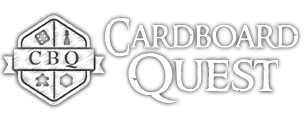Exit The Room: The Secret Lab – (Spoiler-Free) Review
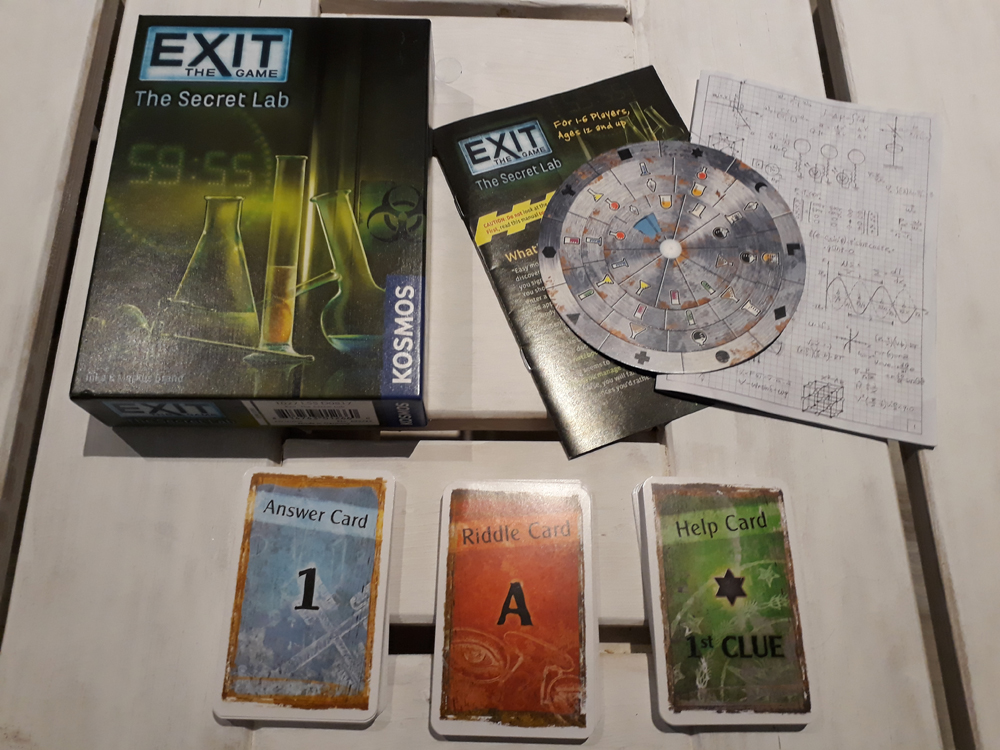
What is it? The card game equivalent of an activity that sounds like something out of a horror movie - escaping a room. You and your team must work together to solve the game's puzzles as quickly as possible to escape, to score as highly as you can.
If you’re unfamiliar with “Escape Room” type games, think of it as a live-action, interactive puzzle game that takes place in a locked room.
You and the rest of your group (usually up to 6 people) are placed in a themed scenario, and have to search your surroundings for hidden objects, investigate various clues, and solve a series of puzzles. As you progress, you’ll unlock doors to other rooms, with even more puzzles.
If you complete it all within 60 minutes, you earn your freedom.
The room is also monitored by a staff member. So if you can’t progress, you’ll be shown relevant clues on a screen by the monitor. Which makes sense, because if you can’t solve a puzzle, it would not have been great waiting for the time to run out, and fail the game.
Now, Kosmos took up the challenge of transferring this experience into a board game, but can it really be done?
Disclaimer: As mentioned in the title, this is a spoiler-free review, so there will be no answers, or images that reveal details or solutions.
How it Works
Exit the Game: The Secret Lab comes in a pretty compact box, with not a lot of components (see image above). A game book, a rulebook, 85 cards, a decoder disk and some “strange items” (which I won’t show you – they are discussed further on in this review).
Each main puzzle in the game is represented by a unique symbol – a circle, a square, a star etc. These symbols appear on various components – cards, decipher wheel, and the game book.
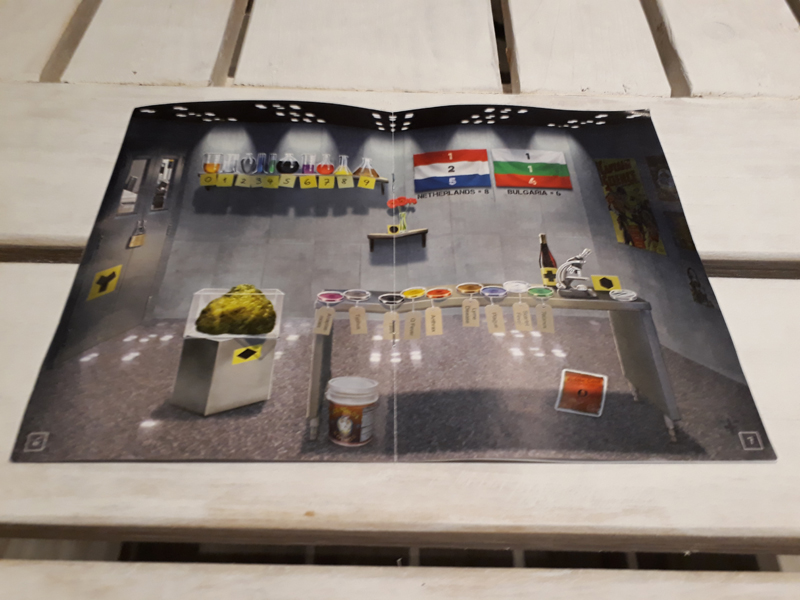
The secret lab you are trapped in. See the unique puzzle symbols on the yellow blocks
The main component is the 12-page game book, of which 2 pages represent the main room you are trapped in – the laboratory. The rest of the book features a welcome message, various clues and tools you’ll need to complete the game.
The 85 cards are split into three different decks – Riddle Cards, Answer Cards and Help Cards.
The 24 Riddle Cards, marked from A to X – you’ll need to solve all of these to escape the laboratory. As Riddle Cards get completed during the game, they get discarded.
Each time you believe you’ve solved a puzzle by using the decoder disk, you will be shown the number of an Answer Card (marked from 1 to 30). On the card, you’ll be asked to match up the unique puzzle symbol, with an image of where that symbols appears in the room. This will then give you the number of another answer card – which is hopefully the solution for that riddle.
If successful, the new Answer Card will tell describe an event that happens within the scenario, and you’ll be asked to pick up a set of specific Riddle Cards to solve more puzzles. All Answer Cards are returned to the deck after use.
If your solution was not correct and you picked the wrong answer card, you will be shown a message that you are wrong. Time to get back to the drawing board, and figure out where you went wrong. Or….
… if you’re really stuck, there are the 31 Help Cards. As mentioned earlier, each main puzzle in the game is represented by a unique symbol. You’ll find these on the outer circle of the decipher disk, and also on the Help Cards. Each puzzle has 3 Help Cards – the first clue tells you which materials you’ll need, the second clue gives you an idea of how to complete the puzzle, while the 3rd card is the puzzle’s complete solution.
You can draw these cards as you need them, with the only negative being that the more Help Cards you use in the game, the lower your end score / rating will be (rated from 0 to 10 stars).
If during the game you used a Help Card that did not give you any new information, then it doesn’t count against you when determining your final score.
The game ends when you complete the final puzzle and are told that you have escaped. You are scored on the time you took to complete the entire game, and how few Help Cards you used. For example:
- If you finish under an hour and use no Help Cards, you’ll score 10 stars (maximum score)
- If you finish under 2 hours and use 1 to 2 Help Cards, you’ll score 6 stars
- Take longer than 2 hours, and use more than 10 Help Cards, and you’ll only score 1 star
Solving a Puzzle
Let’s look at how a puzzle gets solved in more detail. The numbers and letters used in my example are not real game solutions, so they won’t work if you decide to use them.
For this example, let’s say that next you need to open a door on the left side of the lab, marked by a strange y-shaped symbol. Each symbol has three help cards that you can use if you wish to – see below.
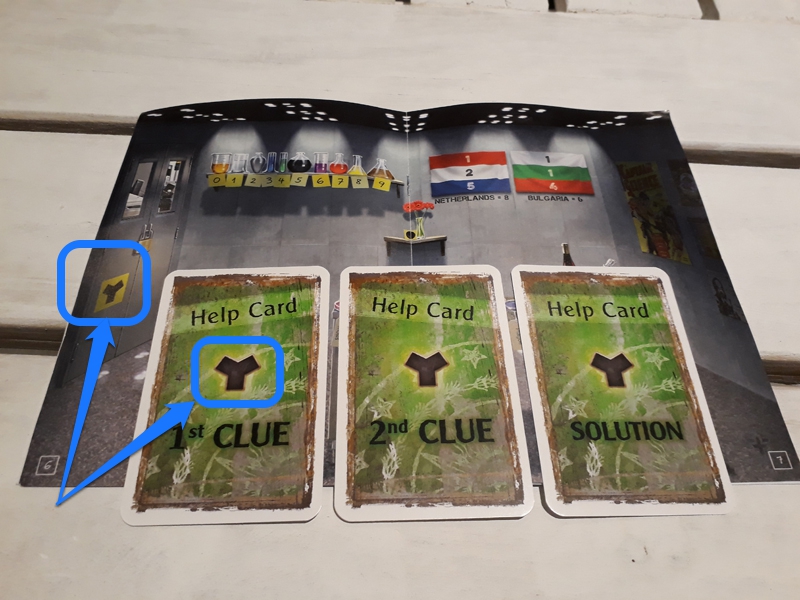
By solving previous puzzles, you’ve picked up a few Riddle cards that you know are associated with the current puzzle. By using those Riddle cards and the book, you attempt to piece together which three lab flask icons are needed to be picked on the decoder disk. Each of the 3 glass bottles have a unique shape and different coloured contents.
By using the decipher disk, you move the 3 inner wheels to line up the 3 bottles that you feel is the solution, with the puzzle’s main symbol that appears on the outer wheel (the y-shaped symbol). When done, you’ll be shown a number in a window towards the middle of the disk. This number shows you the You then need to pick up the Answer Card that displays that number – which is number 22 in this example.
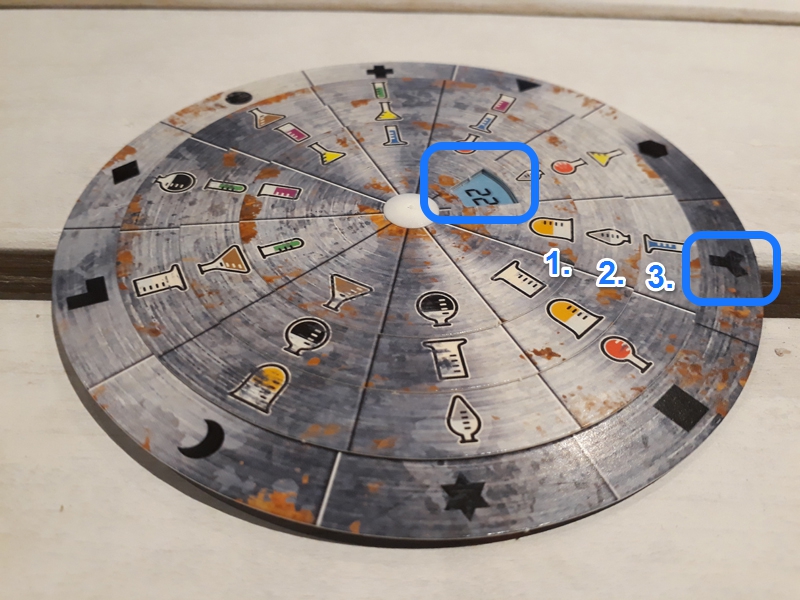
Reveal that Answer Card to the group. If this is the right Answer Card, it will display 10 different images of parts of the room you are currently in. Look for the image that contains the door with the y-shaped symbol (the symbol doesn’t appear there, but the door does). Next to that image is a number of another Answer Card, pick that card up next.
If you were correct, then you’ll get a message of a certain action that takes place within the story – right now you should be told that the lock on the door has been dissolved by chemicals. You’ll also be shown which new Riddle Cards you should pick up to play on. One of these Riddle Cards will represent the new room you’ve just accessed – representing how you and your group move from room to room, solving puzzles.
Place the solved Answer Card back in the deck.
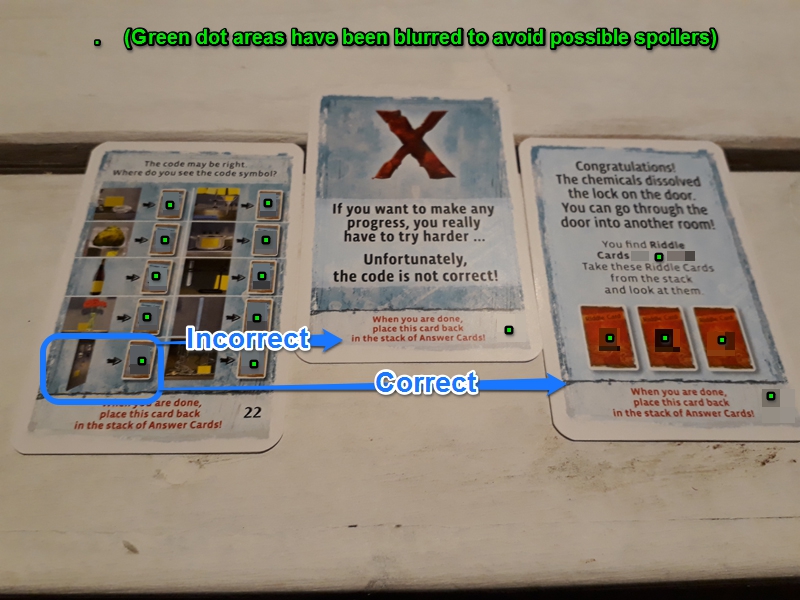
But what if you picked the wrong Answer Card at any stage? “Unfortunately, the code is not correct.” Go back and look at the puzzle and see where you went wrong. If you need assistance, use the Help Cards.
Other Tools
Each game in the “Exit the Room” series is designed to be a once-off experience, as once you know the answers to each puzzle, you’ll never be able to play it again without having a distinct advantage.
What I haven’t mentioned so far, is that you will also at some stage be required to fold, write on, or….. tear some of the game components. You’ll then use these to solve certain puzzles.
Which means that you won’t even be able to pass on this game to friends after you’ve completed it. No lending, no reselling. Won and done.
Remember the strange items I mentioned earlier? There are two of them, and they are present in a punchboard, which should be placed back in the box before you start.
After completing specific puzzles, you’ll draw an Answer Card that will prompt you to take one of the items out of the box, to be used to solve the next puzzle.
Comparing the Experience
Admittedly, I’m a fan of real-life “Escape the Room” puzzle rooms. I feel that for the most part, the Exit the Room series nails the experience surprisingly well, given some initial doubts from my side.
That said, there are obvious differences, the largest being the size of a real-life escape room. Generally we always split up our group so that we can cover the entire room, scavenging for clues and hidden objects. This way we can collect everything quicker, and discuss solutions with each other if stuck.
So everybody is in a different area in the room, meaning that individuals don’t always get to see everything that’s going on. But with Exit the Room: Escape the Lab, you’re all sitting at a table – everybody can see what’s going on. You can choose to assign people to solve different aspects, but we found that sharing the small game game book is not ideal – with 6 people it’s challenging, 3 to 4 people would probably be the best number from a usability perspective.
The Help Cards is a fantastic way of simulating the monitor that keeps a real Escape Room game flowing, ensuring that you’ll never be stuck. But that also means that there is less pressure because you know that you will definitely complete the game. Without a real sense of failure, you’re less motivated to really push yourself to finish the game as quickly as possible. Unless you’re really keen to get a good score.
If you’re looking for a great introduction to the Escape Room experience, this is a fine game to start off with, and at the fraction of the cost.
NOTE: One annoying issue with the demo copy we used – there was a small printing error on a Solution Help Card, which lead to some confusion. Further research (after completing the game) told me that this error was amended for later print runs, so it won’t affect your playthrough.
Thanks to Solarpop for the review copy we tore and cut (you might not want it back).
Pros:
- Does a good job of emulating the Escape the Room experience
- Very inexpensive versus real-life Escape rooms
- Great teambuilding tool
Cons:
- Small materials don’t work well with a large group (5+)
- I’m uncomfortable with tearing / cutting game components
- No real sense of stress as you won’t fail to complete the game
